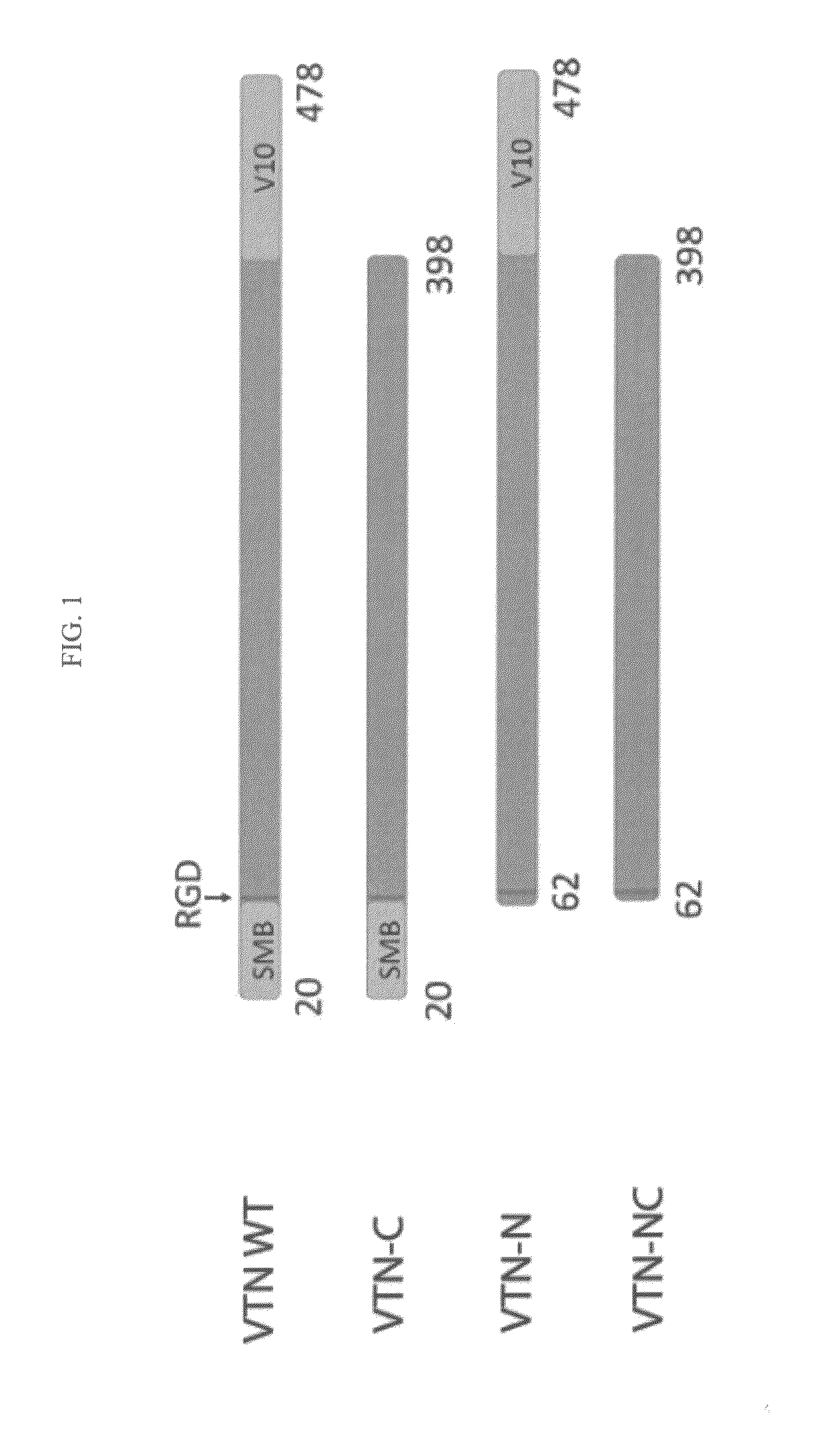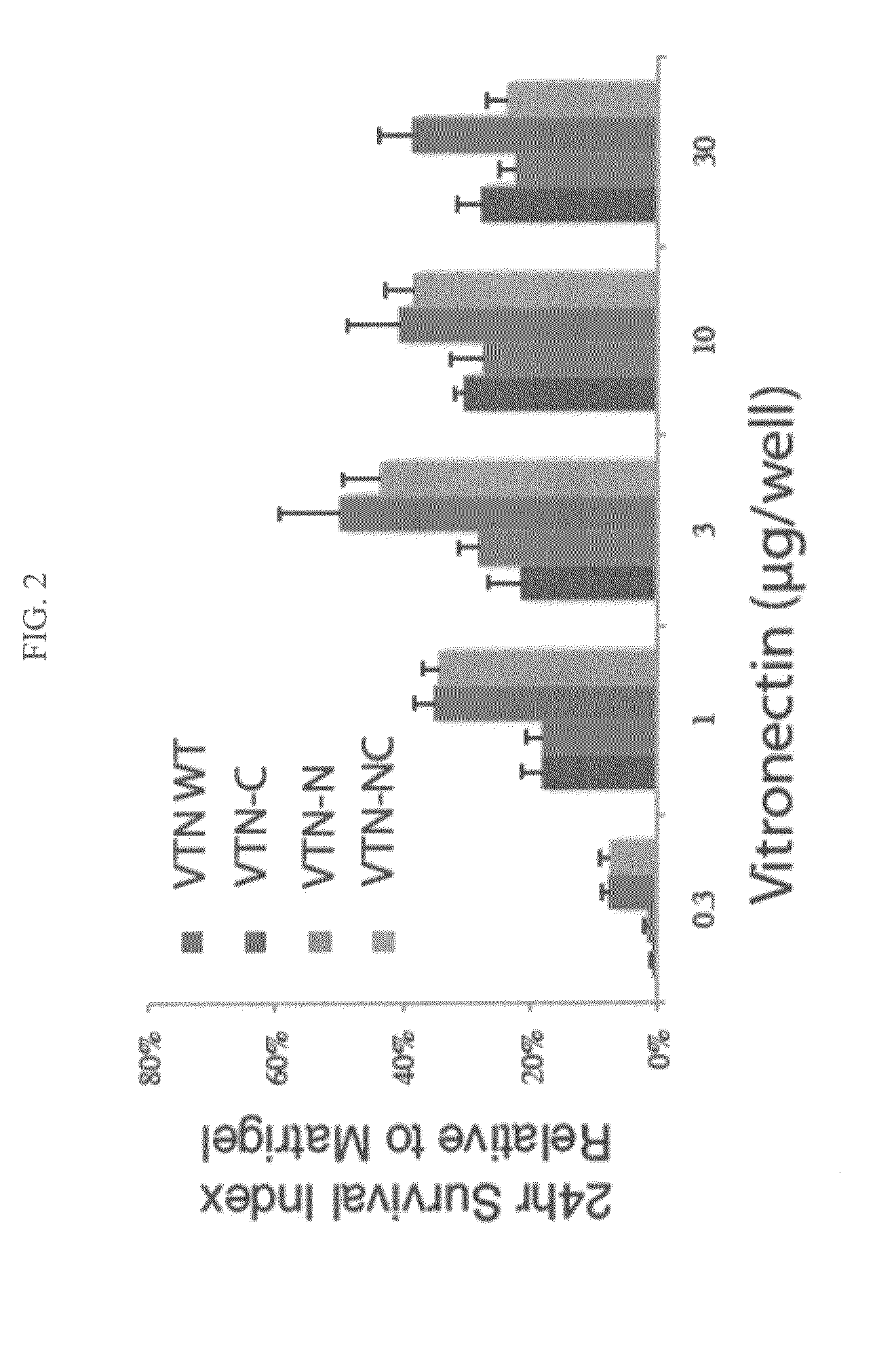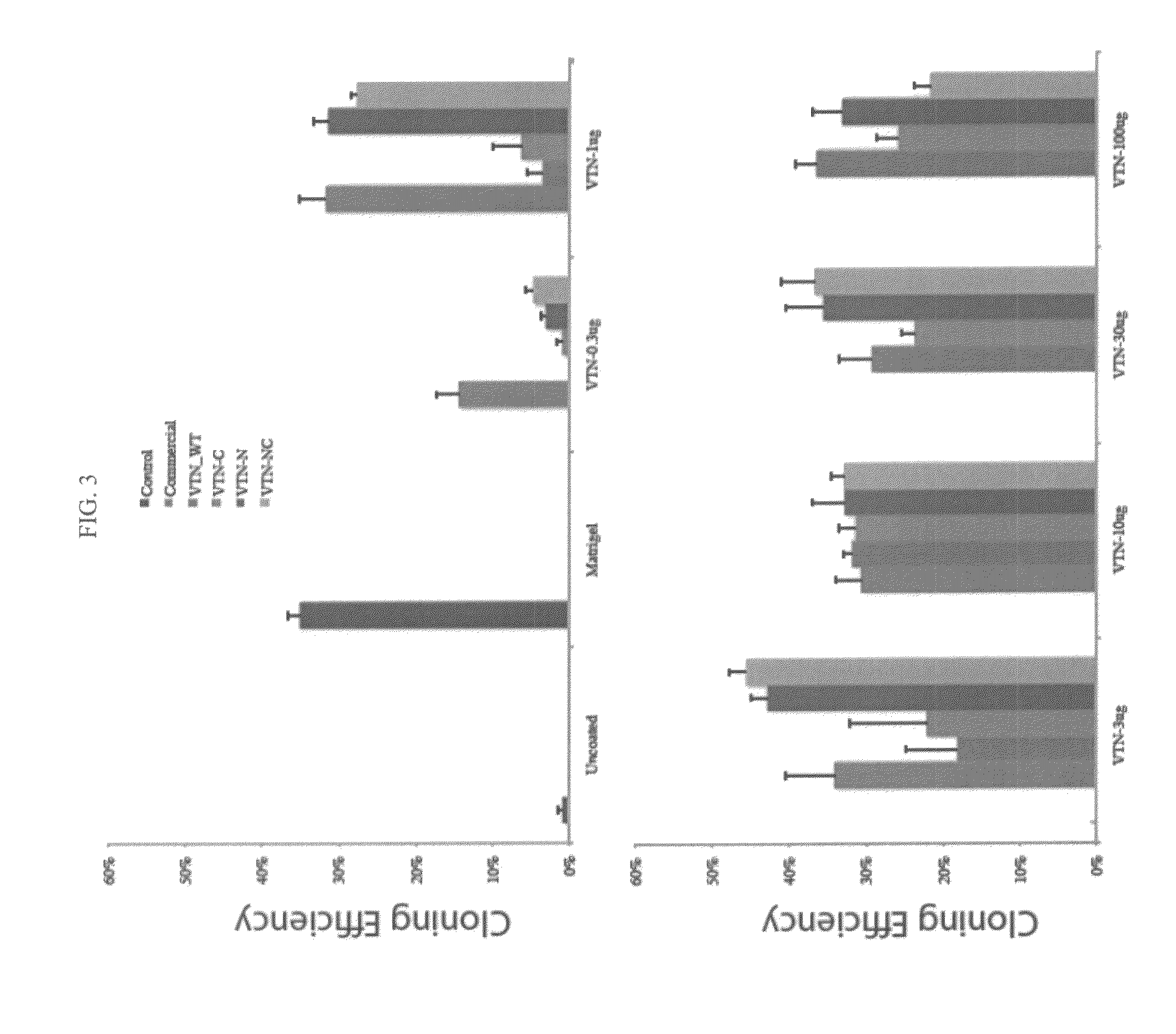Vitronectin-derived cell culture substrate and uses thereof
a technology of vitronectin and cell culture, applied in cell culture active agents, non-embryonic pluripotent stem cells, peptides, etc., can solve the problems of difficult to predict the interaction between the substrate and the cell or media components, high cost and low yield associated with vitronectin production in animal cell culture, and limit the use of the protein in animal cell culture methods. , to achieve the effect of improving ability
- Summary
- Abstract
- Description
- Claims
- Application Information
AI Technical Summary
Benefits of technology
Problems solved by technology
Method used
Image
Examples
example 1
Vitronectin Expression and Purification
[0051]Coding sequences of human vitronectin and three vitronectin variants (having the amino acid endpoints shown in FIG. 1) lacking the N-terminal domain (VTN-N), lacking the C-terminal domain (VTN-C), or lacking the N- and C-terminal domain (VTN-NC) were amplified from cDNA clone purchased from OriGene Technologies, Inc. (Rockville, Md.) and cloned into the NdeI and BamHI sites of a bacterial expression vector (pET3c, Novagen, Inc.). All constructs were verified by sequencing. Proteins were expressed in Rosetta2 (DE3) pLysS E. coli cells (Novagen) cultured in Magic Media (Invitrogen) at 37° C. for 24 hours. The vitronectin proteins were purified essentially as described by Wojciechowski et al., Protein Expr. Purif. 36:131-138 (2004), incorporated herein as if set forth in its entirety. Briefly, the E. coli pellet was resuspended in PBS and lysed with FASTBREAK™ cell lysis reagent (Promega). Insoluble material was pelleted by centrifugation at...
example 2
Pluripotent Cell Survival Assay
[0052]Vitronectin variants lacking the N-terminal domain (VTN-N), lacking the C-terminal domain (VTN-C), or lacking the N- and C-terminal domain (VTN-NC) were expressed in E. coli and purified essentially as described in Example 1 and used to coat 12-well plate wells at various concentrations (0.3-30 μg / well). Five-hundred microliters (μL) of medium was loaded into each well of the 12-well plates prior to the addition of cells. Adherent pluripotent cells were dissociated with TrypLE (Invitrogen) for 5 minutes or until fully detached from the culture plates. TrypLE was neutralized by adding an equal volume of media to the culture. The cells were counted, washed, and resuspended in fresh medium at a concentration of 300,000 to 1,000,000 cells / ml. The cells were added onto cell culture plates coated with the various vitronectin proteins and were incubated at 37° C. with 5% O2 and 10% CO2. Cells were again dissociated at various time points using 0.4 ml Tr...
example 3
Enhanced Pluripotent Stem Cell Survival
[0053]Vitronectin polypeptide variants lacking the N-terminal domain (VTN-N), lacking the C-terminal domain (VTN-C), or lacking the N- and C-terminal domains (VTN-NC) relative to full-length vitronectin were expressed in E. coli and purified essentially as described in Example 1. Cell survival assays were conducted essentially as described in Example 2. The three vitronectin polypeptide variants were coated onto cell culture plates at concentrations ranging from 1-30 μg / well. Approximately 100,000 H1 cells were plated onto cell culture plates coated with wild-type full-length vitronectin, VTN-N, VTN-C, or VTN-NC in a fully-defined culture medium (DMEM / F12, L-Ascorbic Acid, Selenium, Transferrin, NaHCO3, Insulin, FGF2, and either TGF-β or Nodal) and counted after 24 hours. Survival of cells grown on vitronectin polypeptide variants lacking the N-terminal domain (VTN-N, dark gray) or lacking both N- and C-termini (VTN-NC, light) was significantly...
PUM
| Property | Measurement | Unit |
|---|---|---|
| doubling time | aaaaa | aaaaa |
| pH | aaaaa | aaaaa |
| volumes | aaaaa | aaaaa |
Abstract
Description
Claims
Application Information
 Login to View More
Login to View More - R&D
- Intellectual Property
- Life Sciences
- Materials
- Tech Scout
- Unparalleled Data Quality
- Higher Quality Content
- 60% Fewer Hallucinations
Browse by: Latest US Patents, China's latest patents, Technical Efficacy Thesaurus, Application Domain, Technology Topic, Popular Technical Reports.
© 2025 PatSnap. All rights reserved.Legal|Privacy policy|Modern Slavery Act Transparency Statement|Sitemap|About US| Contact US: help@patsnap.com



